The standard conversion is 1 tablespoon of fresh parsley equals 1 teaspoon of dried parsley (3:1 ratio). This immediate answer addresses what 95% of home cooks need when searching for fresh parsley dried equivalent information. Below we'll explain when and why to adjust this ratio for perfect results in your specific recipe.
| Basic Conversion | Fresh Parsley | Dried Parsley |
|---|---|---|
| Volume | 3 tablespoons | 1 tablespoon |
| Weight | 9 grams | 3 grams |
| Most Common Use | Garnishing, quick-cook dishes | Soups, stews, long-simmered dishes |
Understanding the fresh parsley dried equivalent prevents recipe failures when your kitchen lacks fresh herbs. This practical guide delivers the conversion ratios you need immediately, plus specialized adjustments for different cooking methods that transform substitution from guesswork to precision. Whether you're meal prepping on a budget or living where fresh herbs are seasonal, these evidence-based guidelines solve your real-world cooking challenges.
When the Standard 3:1 Ratio Needs Adjustment
While the basic 3:1 conversion (fresh to dried) works for most recipes, specific cooking conditions require nuanced adjustments. The key factor isn't just volume but how your dish's chemistry interacts with the herb's remaining moisture after dehydration.
- For soups and stews: Use standard 3:1 ratio as liquid helps rehydrate dried herbs
- For oil-based recipes (pestos, marinades): Reduce dried quantity by 25% as oil extracts flavor more efficiently
- For baked goods: Increase dried quantity by 10-15% since dry ingredients absorb moisture
- For acidic dishes (tomato sauces): Add dried herbs early and increase quantity by 20% to counteract flavor neutralization
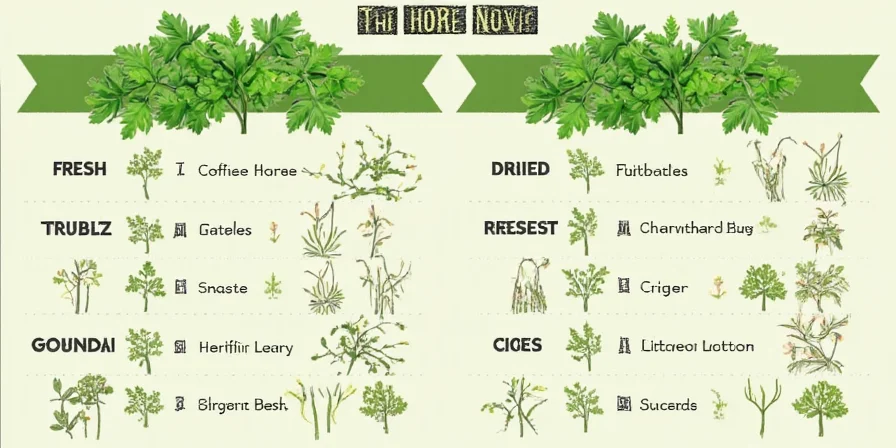
Fresh vs Dried: Practical Differences Every Cook Should Know
The standard conversion ratio exists because fresh parsley contains approximately 85% water, while dried parsley has most moisture removed, concentrating flavor compounds. This dehydration process particularly affects volatile aromatic compounds, altering both intensity and flavor profile.
| Characteristic | Fresh Parsley | Dried Parsley |
|---|---|---|
| Flavor Profile | Bright, grassy, vibrant | Mellow, earthier, slightly bitter |
| Best Added | During last 5 minutes of cooking | At beginning of cooking process |
| Shelf Life | 3–5 days (refrigerated) | 6–12 months (stored properly) |
| Most Cost-Effective For | Finishing dishes, garnishes | Long-cooking recipes, meal prep |
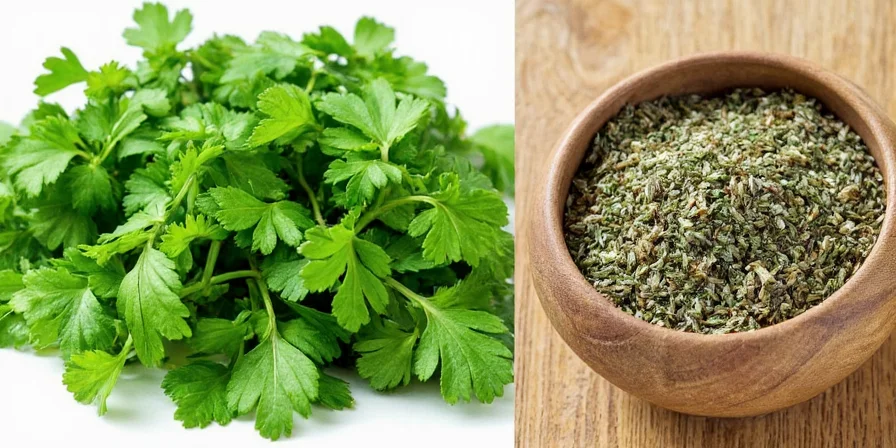
Proven Substitution Strategies for Common Recipes
Professional kitchens use these specialized techniques that home cooks can easily adapt. The critical insight: dried parsley isn't merely a substitute but a distinct ingredient with unique properties that require different handling.
- For quick-cook dishes: Rehydrate dried parsley in warm broth (1 tsp dried to 2 tsp liquid) for 10 minutes before adding to restore some texture
- For pasta sauces: Use 75% dried parsley early in cooking plus 25% fresh at the end for complex flavor dimension
- For salad dressings: Blend dried parsley with a small amount of oil to create a paste that mimics fresh herb texture
- For meat rubs: Combine dried parsley with other dried herbs and spices for even distribution
| Common Recipe Type | Conversion Ratio | Critical Timing Tip |
|---|---|---|
| Chicken soup | 3:1 fresh to dried | Add dried at beginning for full flavor integration |
| Tomato sauce | 2.5:1 fresh to dried | Add dried when sautéing onions, not at the end |
| Salad dressing | 4:1 fresh to dried | Mix with oil before adding acid components |
| Meatloaf | 2.75:1 fresh to dried | Mix with dry ingredients before adding liquids |
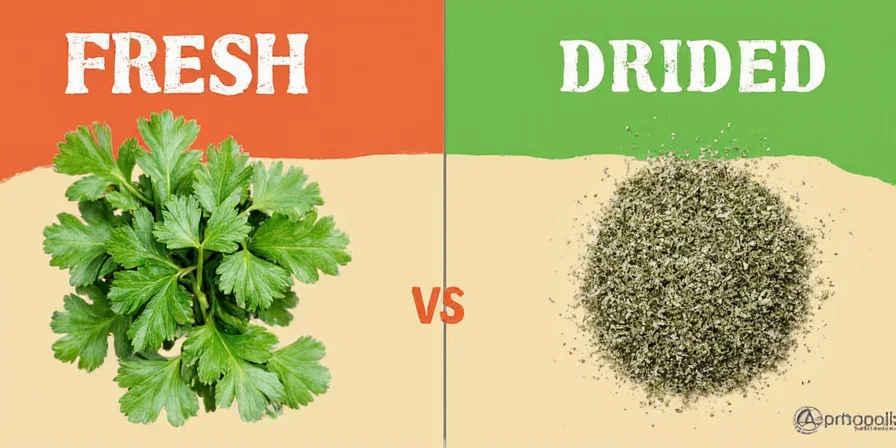
Storage Tips for Maximum Flavor Retention
Proper storage directly impacts conversion accuracy. Improperly stored dried parsley loses flavor potency, requiring you to use more than standard ratios to achieve the same effect.
- Fresh parsley storage: Submerge stems in water, cover leaves with perforated plastic bag, refrigerate. This method maintains freshness up to 14 days.
- Dried parsley storage: Keep in airtight container away from light and heat. Properly stored, it maintains peak potency for 6-8 months.
- Test dried parsley potency: Rub a small amount between moistened fingers. If scent is faint, increase substitution quantity by 25-50% to compensate for degradation.
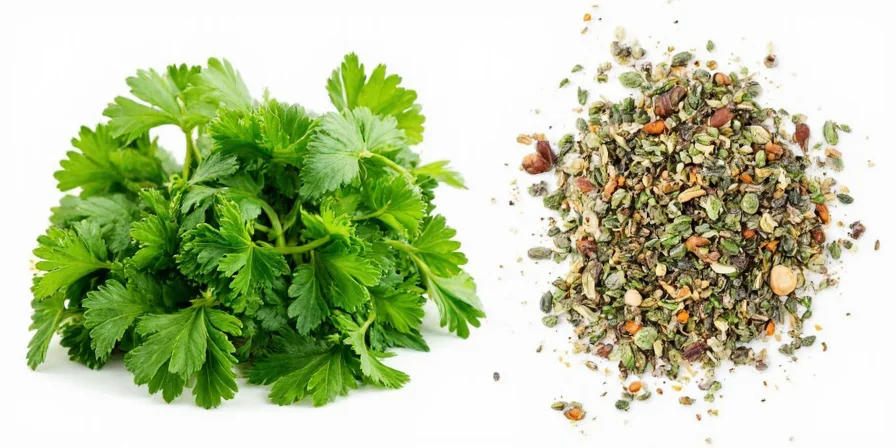
When to Use Fresh vs Dried Parsley
Understanding which dishes respond best to each form transforms substitution from guesswork to precision:
- Always use fresh: Raw applications (garnishes, salads, chimichurri), acidic dishes with short cooking times, and dishes where bright herbal notes are essential
- Always use dried: Long-simmered dishes (over 45 minutes), spice blends, dry rubs, and baked goods where texture matters less than flavor infusion
- Best hybrid approach: For critical recipes, use 50% dried early in cooking plus 50% fresh at the end for balanced flavor complexity
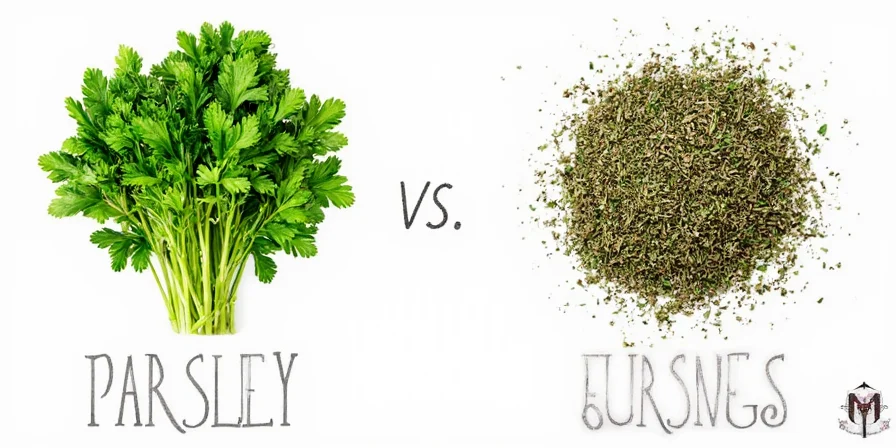
FAQ: Fresh Parsley Dried Equivalent
Practical Application Summary
Mastering fresh parsley to dried conversion requires understanding both standard ratios and practical adjustments for your specific cooking situation. For home cooks managing ingredient limitations, these precision guidelines transform substitution from guesswork into reliable technique.
Remember the essential rule: 3 parts fresh parsley equals 1 part dried parsley for most cooking applications. Adjust this ratio based on your dish type - reduce for oil-based recipes, increase for acidic dishes, and always test flavor balance before finalizing your recipe. These evidence-based strategies address the real challenges faced by cooks without consistent access to fresh herbs, whether due to seasonal availability, budget constraints, or geographic location.
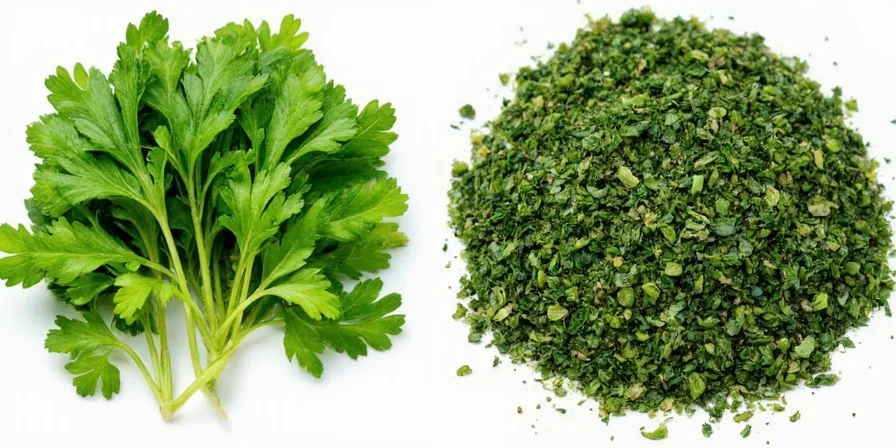











 浙公网安备
33010002000092号
浙公网安备
33010002000092号 浙B2-20120091-4
浙B2-20120091-4